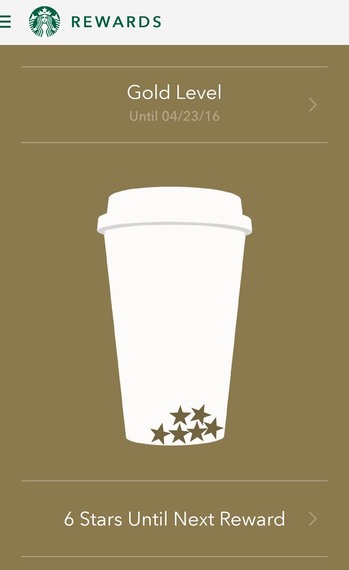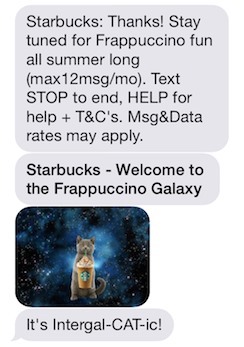Up to 60 percent of consumer's time spent online is spent on mobile devices, presenting a vast opportunity to engage your customers on mobile as they interface with your retail locations.
This type of marketing is still developing, but learning first how to effectively experiment with different uses of mobile to see what works and what doesn't now is important for continued success in the future.
Starbucks is a leader in omni channel marketing, and there are a variety of strategies that you can glean from their mobile initiatives to better prepare your organization for mobile opportunities.
Starbucks Creates an Engaging Mobile Retail Experience
Starbucks has considered the desires of their customers by researching their buying habits and developing a strategy to cater to their customer's wants and needs. They discovered that by developing a mobile application, they could create an opportunity to engage their audience with their mobile offerings more frequently.
The app, simply called Starbucks, features a store locator, gift card information and a rewards program for its members. Starbucks understands that to best engage their customers in retail, they should offer them special incentives such as discounts, free beverages and birthday gifts. This helps to keep their customers retained and engaged, since they'll need to continuously use the application to receive rewards.
By creating an engaging mobile retail experience and simplifying the transaction process for their on-the-go customer base, Starbucks has proven that they understand the desires of their customers, something that you should focus on when experimenting with mobile marketing.
Research the motives of your audience when you develop a mobile marketing campaign and ask yourself how you can make your offerings more valuable to them while ultimately guiding them to make a purchase.
Starbucks Increases Loyalty and Retention by Offering Personalized Incentives
Starbucks has improved their mobile marketing by seamlessly incorporating a loyalty program into their Starbucks mobile application, and while not a new concept, by doing so, they have effectively removed the need for stamp cards for their mobile users.
This incentivizes their customers to continue using their mobile program, because they have found that their users are more likely to continue making purchases to earn a free prize. As a result, Starbucks is able to continue to gather more data about their customer base.
Starbucks incentivizes its customers with free rewards on their mobile app.
After a user has received a certain number of stars, in Starbucks case 30 within a year, a customer is then eligible for more benefits. While this tactic may not work for all retail business models, by using mobile to reward customers for their continued support, you may be able to increase customer retention, loyalty and lifetime value.
Additionally, Starbucks entices it's more engaged customers to take surveys for stars, which many are happy to complete because they know they will be closer to earning another reward. Consider this when seeking additional consumer information from your mobile marketing efforts.
Tactful SMS - Taking Advantage of Mobile Properties
Developing a mobile application may not always be the best option for a variety of retailers; however, we can learn from other Starbucks other mobile strategies, such as how they perform their SMS marketing.
Starbucks focuses their SMS marketing on their consumers and less about their brand, which invites more customers to opt in for rewards, similar to how their loyalty program works.
SMS can act similarly to email marketing but be an effective alternative because often times it achieves extremely high open rates, up to 90 percent. By creating another channel for their customers to interact, Starbucks helps to avoid alienating the customers that don't have or maybe don't want to use their mobile application, but still want to receive rewards.
Starbucks primarily uses SMS to entice customers to visit their brick-and-mortar locations by creating content that is focused around their latest specials,which can increase their chances of driving more customers to visit their stores.
Retailers should experiment with a variety of mobile marketing strategies when learning to find which initiatives will work best for their business.
Focus your marketing offerings around the desires of your customers and ask yourself the value that you can provide for them. Success in mobile marketing can be achieved by developing trust and loyalty with your audience like Starbucks.
A version of this column previously appeared on the eTail East blog.
Brian Honigman is the CEO of Honigman Media, a content marketing consultancy that provides strategy on content distribution and content creation. Subscribe to his newsletter to become a better marketer.


